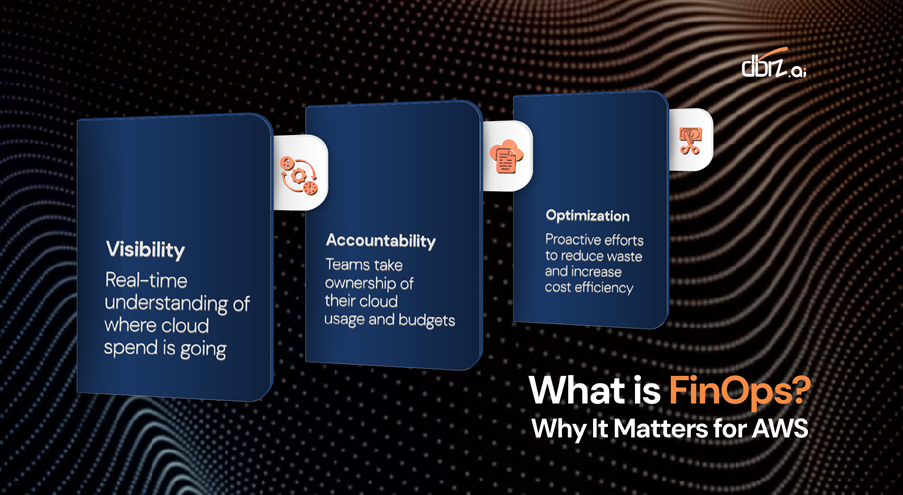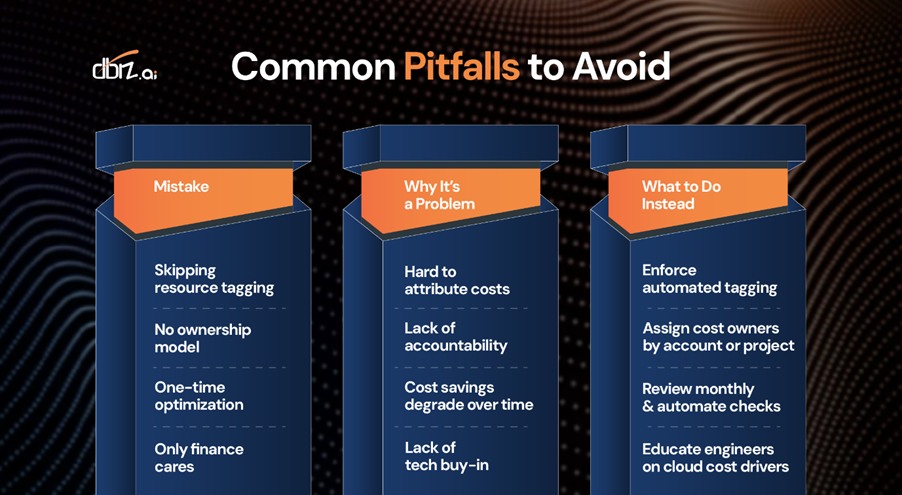Table of Contents
Introduction to How to Implement FinOps in Your AWS Environment
As cloud infrastructure grows in complexity, so does the challenge of managing cloud costs. Amazon Web Services (AWS) offers incredible scalability and flexibility, but without proper oversight, it can lead to budget overruns and inefficiencies. That’s where FinOps comes in.
FinOps (Financial Operations) is a collaborative operating model that brings together finance, engineering, and product teams to take ownership of cloud usage and cost management. If your organization relies on AWS, implementing FinOps can significantly enhance cost visibility, optimize cloud resources, and align cloud investments with business objectives.
What is FinOps and Why It Matters for AWS

FinOps is the practice of managing cloud costs across teams while maintaining speed and innovation. It promotes:
- Visibility: Real-time understanding of where cloud spend is going
- Accountability: Teams take ownership of their cloud usage and budgets
- Optimization: Proactive efforts to reduce waste and increase cost efficiency
For AWS users, this practice is especially critical because of the platform’s pay-as-you-go model, where costs can quickly spiral out of control without visibility and governance.
Step-by-Step Guide to Implement FinOps in AWS
1. Assemble a Cross-Functional FinOps Team
- Engineering – to understand cloud usage
- Finance/Procurement – to manage budgeting and forecasting
- Operations – to align business priorities
- Product/Business Owners – to ensure spending delivers value
2. Define Cloud Financial Governance Policies
- Resource provisioning standards
- Tagging requirements
- Budget thresholds
- Approval workflows
3. Use AWS Native FinOps Tools
- AWS Cost Explorer: Analyse cost trends and breakdowns by service, tag, or linked account
- AWS Budgets: Set and monitor custom cost and usage budgets
- AWS Cost and Usage Report (CUR): Access detailed billing data for advanced analysis
- AWS Trusted Advisor: Identify underused resources and cost-saving opportunities
- AWS Compute Optimizer: Recommend instance right-sizing for EC2, Lambda, and more
4. Implement a Robust Tagging Strategy
- Environment (e.g., dev, staging, prod)
- Team or Department
- Project or Application
- Owner
5. Automate Cost Monitoring and Optimization
- Scheduled shutdowns for non-production resources
- Auto-tagging tools to enforce compliance
- Serverless functions (AWS Lambda) to clean up unused resources
6. Review and Right-Size Regularly
- Identify over-provisioned resources
- Adjust EC2 instance types
- Optimize storage tiers (e.g., move from S3 Standard to S3 Infrequent Access)
- Utilize Savings Plans or Reserved Instances for predictable workloads
7. Educate Teams and Build a Cost-Aware Culture
- Teach developers how their design choices impact cost
- Share success stories from cost-saving efforts
- Encourage a shift-left approach to cost decisions during design and development phases
Best Practices for AWS FinOps
- Start with visibility: You can’t manage what you can’t see
- Adopt show back or chargeback models for internal accountability
- Forecast regularly using historical data and planned projects
- Set budgets per team or project to prevent surprises
- Foster collaboration between tech and finance
Common Pitfalls to Avoid

Conclusion
Implementing FinOps in your AWS environment empowers your teams to innovate responsibly. With a structured approach, the right tools, and a strong culture of collaboration, you can bring cloud costs under control without slowing down development or business agility.
Start small—perhaps with tagging or enabling AWS Budgets—and build momentum. FinOps isn’t a one-time project, but an ongoing practice that grows with your organization.
FAQs
- What’s the first step to implementing FinOps in AWS?
Start by forming a FinOps team that includes engineering, finance, and product leaders. Establish roles and responsibilities and begin reviewing AWS spend together. - How can tagging help in FinOps?
Tagging helps attribute cloud costs to specific teams, projects, or environments. This improves visibility, accountability, and enables accurate chargeback/show back. - What AWS services support FinOps efforts?
Key AWS services include Cost Explorer, Budgets, Trusted Advisor, Compute Optimizer, and Cost and Usage Reports. - How often should I review AWS spending?
Ideally monthly, though some high-spend environments benefit from weekly reviews. Automate alerts for real-time visibility. - Is FinOps only for large enterprises?
No. Any company using the cloud—regardless of size—can benefit from FinOps. Even startups can save thousands by optimizing their AWS environments early.


